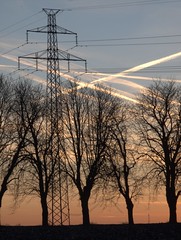The reality of climate change, combined with global warming and deterioration of infrastructures, has resulted in numerous power failures in many areas of the country, and now is the time for each of us to accept the responsibility of maintaining power in our homes when our utility companies fail to maintain the flow of electricity during extreme weather occurrences. The need to take matters into our own hands is more urgent than ever as we now witness the task of finding solutions to climate change being undertaken by our politically divided Congress. We can assume that major upgrades of power grids will happen one day, hopefully before a complete irreparable power failure ensues. Meanwhile, on a more frequent basis, we are forced to endure days or hours without electricity during winter and summer storms or during excessively hot days when the present power grids face an undue burden.
A little research shows that there are remedies to ensure house power when the utility companies fail, some more costly than others, but solutions, nonetheless. We will take a look at few of these.
- Gas generators. Most of us are familiar with gas generators that can be purchased for as little as $299, especially if bought during non-emergency periods. The simplest generators operate off of gas. Cheaper models can support a few lights and perhaps a fan or electric heater and a refrigerator during power failures, but not much more. These generators tend to be very noisy. However, the biggest issue is that they MUST be placed in an open area to prevent carbon monoxide buildup and exposure, which can be fatal. In times of power outages, gas generators do help us have access to some power in our homes.
- Backup generators. A more sophisticated generator is the backup version which is wired into a gas or propane line. Depending on the size, these products can keep the lights on in the entire house, preserve refrigerator function to prevent food spoilage, maintain power supply to heating and cooling systems and keep sump pumps and well pumps in operation. These systems have built-in battery chargers to guarantee battery operation and feature automatic transfer switches between utility power and generator power. Backup generators are available for purchase or for lease.
- Solar panels. As President Obama noted in the State of the Union Address this week, the cost of solar energy is getting cheaper. As solar energy becomes a more mainstream option, there now are many financing, leasing and equipment options available. Cost can run from about $1500 to more than $10,000. When we hear the term solar energy, we immediately think about “photo-voltaic panels,” but there are other sola products available. They include ground solar panels or grid-tied solar energy systems with a battery backup. The latter option is very expensive, but it may be a worthwhile investment, particularly in areas of the country that are forced to endure repeated extended periods without power. Another option is small portable emergency solar power systems that can be used to operate a few small appliances but is inadequate for large appliances, furnaces or cooling systems. A review of other available products indicate other options, including stand alone systems, remote power systems and emergency power systems. Solar energy systems often include a bonus of energy tax credits, thereby making them even more attractive.
Considering that the storm season is approaching and that it is more than reasonable to expect as many or more power outages than we have previously experienced during the past summer seasons, it is important that we take charge of the responsibility of keeping our electricity running when the local power grid fails. We must continue to hold our elective officials, federal, state and local, responsible for enacting policies to protect the environment and to make it a priority to upgrade deteriorating infrastructures and power grids. Also, we must communicate with utility companies and demand to be included in the conversation on the power needs of our communities. Lastly, we must continue to rally and speak up for the environment, the need to reduce our carbon footprint, protect our waters and to accept the reality of climate change based on hard scientific facts. We must continue to fight to live green, be green.
Sources:
http://home.howstuffworks.com/home-improvement/household-safety/security/emergency-power.htm
http://www.getsolar.com/residential_Solar-Roof-vs-Ground-Installation.php
http://energy.gov/energysaver/articles/tips-renewable-energy
http://www.huffingtonpost.com/dan-r-fink/solar-electric-backup-for_b_1696535.html

